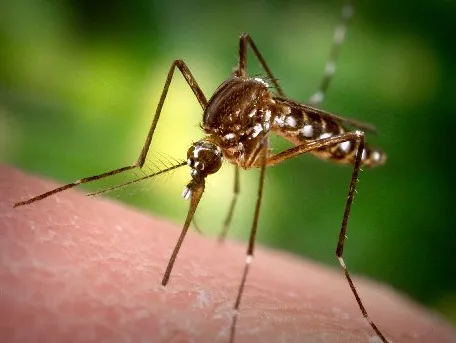Newsmatro

VENTURA, Calif.- A combination of powerful winter storms, scorching summer temperatures, and the influence of tropical storm Hilary has led to a significant increase in invasive Aedes mosquitoes in California. This surge has also been accompanied by the first reported human cases of West Nile virus in certain regions.
The rise in mosquito activity has resulted in 153 reported cases of West Nile virus in the state so far, more than double the number from the previous year, as reported by the California Department of Public Health. This phenomenon is part of a larger trend across the country, driven by increased rainfall in specific areas, which has raised concerns about various mosquito-borne illnesses. Health authorities are urging residents to take preventive measures, such as eliminating stagnant water sources.
Culex mosquitoes, carriers of the West Nile virus, are present throughout California. In June, officials confirmed that three dead birds in Simi Valley, Thousand Oaks, and Ventura were infected with West Nile virus. While these birds serve as indicators of potential virus risks, no further cases of infected birds have been reported.
West Nile virus typically causes no symptoms, with occasional cases leading to flu-like symptoms. In less than 1% of cases, the virus can result in severe neurological conditions such as meningitis and encephalitis.
“People need to be vigilant and concerned about mosquito bites,” emphasized Dr. Robert Levin, a health officer for Ventura County, where the first case of West Nile virus in four years was confirmed last Thursday.
The resurgence of mosquitoes in California is attributed to a series of weather events, including heavy rainfall earlier in the year and triple-digit temperatures in July and August. Tropical storm Hilary, which transitioned from a hurricane, added to the issue by depositing significant rain in various breeding grounds, creating ideal conditions for mosquito breeding.
The Culex mosquitoes primarily feed from dusk to dawn, while Aedes aegypti mosquitoes, characterized by small size and black color with white stripes on their back and legs, are daytime biters. Although they have the potential to transmit diseases like Zika, dengue, chikungunya, and yellow fever, there have been no reports of such transmissions in California.
The presence of Aedes mosquitoes, also known as yellow fever mosquitoes, in California has been expanding. In 2020, they were identified in several local communities, including areas within Ventura County.
To mitigate the risk of mosquito-borne illnesses, vector control and public health officials recommend the following preventive measures:
These precautions aim to reduce the risk of mosquito-borne illnesses and help protect public health.